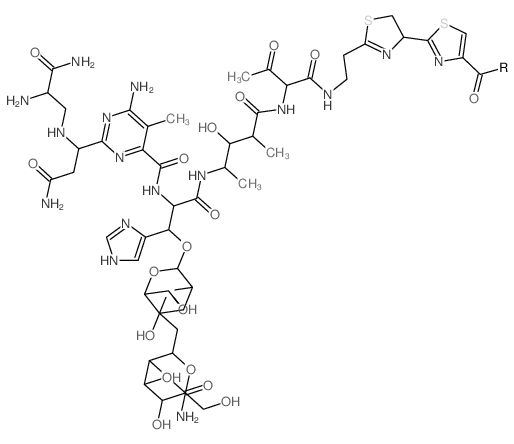Copper(II).bleomycin, iron(III).bleomycin, and copper(II).phleomycin: comparative study of deoxyribonucleic acid binding.
L F Povirk, M Hogan, N Dattagupta, M Buechner
文献索引:Biochemistry 20 , 665-671, (1981)
全文:HTML全文
摘要
The kinetics and mechanism of binding of Cu-(II).bleomycin, Fe(III).bleomycin, and Cu(II).phleomycin to DNA were studied by using fluorometry, equilibrium dialysis, electric dichroism, and temperature-jump and stopped-flow spectrophotometry. The affinity of Cu(II).bleomycin for DNA was greater than that of metal-free bleomycin but less than that of Fe(III).bleomycin. Cu(II).bleomycin exhibited a two-step binding process, with the slow step indicating a lifetime of 0.1 s for the Cu(II).bleomycin.DNA complex. Fe(III).bleomycin binding kinetics indicated the presence of complexes having lifetimes of up to 22 s. DNA was lengthened by 4.6 A/molecule of bound Cu(II).bleomycin and by 3.2 A/bound Fe(III).bleomycin but not at all by Cu(II).phleomycin, suggesting that both bleomycin complexes intercalate while the phleomycin complex does not. However, phleomycin exhibited nearly the same specificity of DNA base release as bleomycin. These results suggest that the coordinated metal ion plays a major role in the binding of metal-bleomycin complexes to DNA but that intercalation is neither essential for DNA binding and degradation nor primarily responsible for the specificity of DNA base release by these drugs.
相关化合物
| 结构式 | 名称/CAS号 | 分子式 | 全部文献 |
|---|---|---|---|
 |
腐草霉素
CAS:11006-33-0 |
C52H75N16O21S2 |
|
CRE recombinase-based positive-negative selection systems fo...
2008-01-01 [Mol. Biochem. Parasitol. 157(1) , 73-82, (2008)] |
|
Sulphydryl-mediated DNA breakage by phlemomycin in Escherich...
1977-02-01 [Mutat. Res. 42 , 181-190, (1977)] |
|
Bleomycin and X-ray-hypersensitive Chinese hamster ovary cel...
1988-03-01 [Mutat. Res. 193 , 157-165, (1988)] |
|
A Saccharomyces cerevisiae phleomycin-sensitive mutant, ph14...
1996-12-01 [Can. J. Microbiol. 42 , 1263-1266, (1996)] |
|
Extending the Schizosaccharomyces pombe molecular genetic to...
2014-01-01 [PLoS ONE 9(5) , e97683, (2014)] |